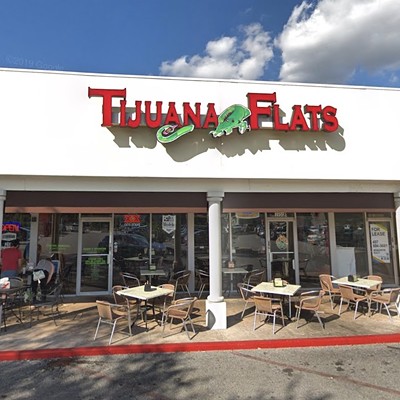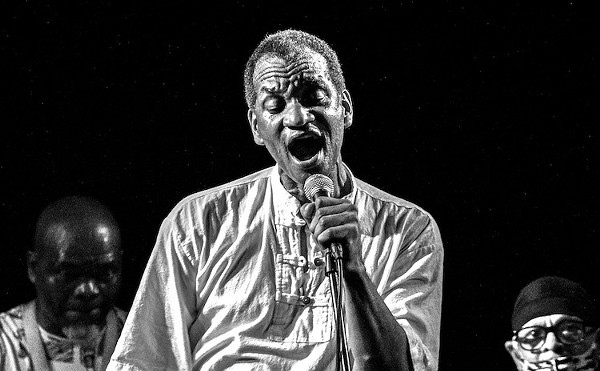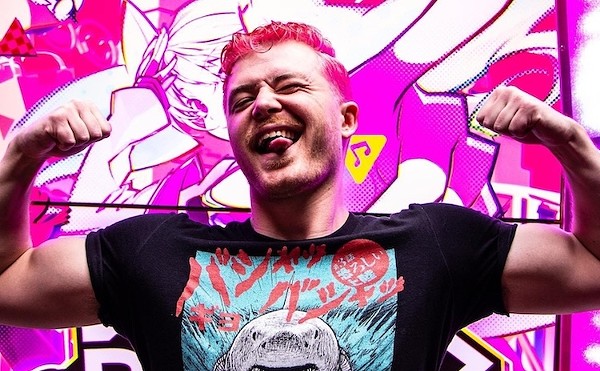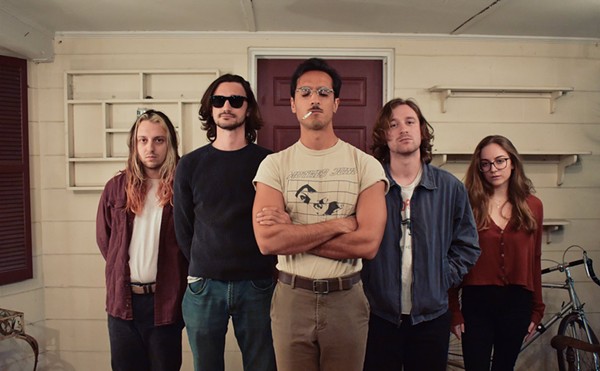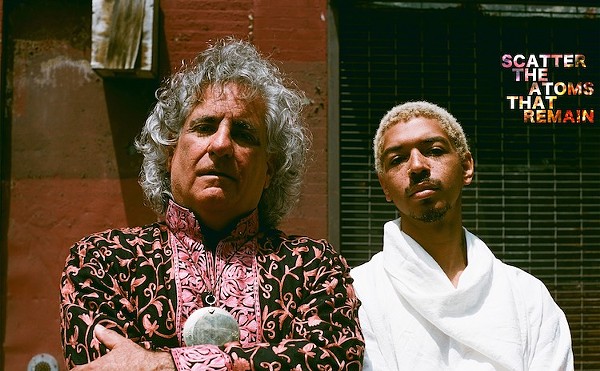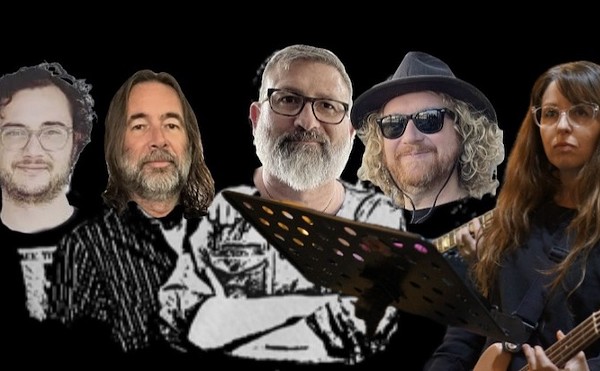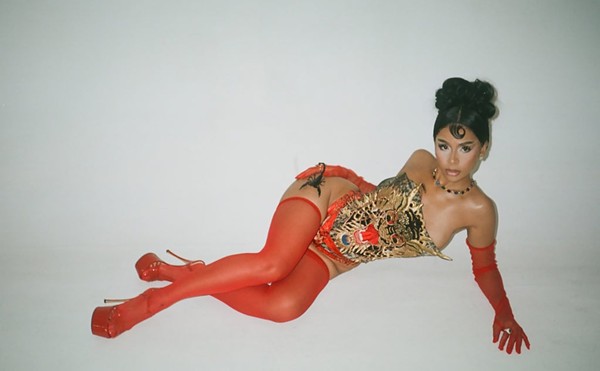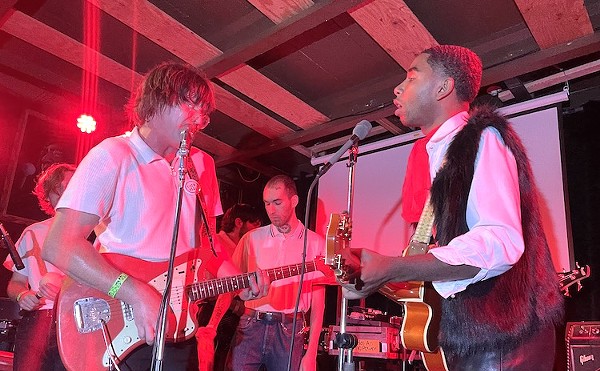The Florida winter had just started to make its presence known on the streets of downtown as Kimball Collins hit Orange Avenue after finishing his DJ set at the Beach Club one Saturday late in 1988. He had been noticing people entering the old Beacham Theater a few hundred yards away, and his curiosity was aroused.
He heard they were playing the same synth-pop and "newbeat"-- an industrial-flavored precursor to techno music -- that he was spinning during his sets, but nothing prepared him for what he would find inside the Beacham Theater. A DJ named Jo-Ed was spinning intense, psychedelic house music not too far removed from the newbeat Collins incorporated in his set. But the vibe was very different. The crowds seemed to be one with the music, and Collins was transfixed by the "acid house" sounds emanating from Jo-Ed's turntables. "That was it. It was all over," recalls Collins. "I was always interested in anything unique and different as far as styles of music go. So I was completely captivated by his whole sound."
Before long Collins would be manning the decks at the Beacham, spinning marathon progressive house sets long into the night. Collins could not be aware of it at the time, but those Saturday nights -- eventually known as "Aahz"-- would kick-start an underground culture and spawn countless DJ careers. Orlando would never be the same.
It is a peculiar time for music in Orlando -- and the nation in general. The trailblazing styles of popular music, integrity and optimism that once characterized the "Alternative Nation" are long gone, replaced by an embrace of commercialism, opportunism and homogenous, pop-chart friendly music. Orlando -- once known as one of the most progressive dance cultures in the country -- is now better known for safe, VH1-ready pop bands with hummable hooks. A year after the provisions of the "anti-rave" bill were adopted by the city of Orlando, the dance scene, while prevalent and still healthy, is long past the pinnacle it once achieved. That doesn't mean the craving for all-night dance parties has diminished, as the producers of this weekend's 1998 Zen Festival will attest. Now everyone is watching Zen to see if it can avoid the hassles of last year, but it is a safe bet that the 1998 Zen Fest could be the last all-night dance-music event in Central Florida. Dance-music culture may never go away, but the industry surrounding it -- the clothing stores, record shops and large scale clubs -- is likely to take some pretty heavy hits.
By 1991-1992, Orlando experienced its own "summer of love" through the culture that sprang up around the weekend acid-house nights at the Beacham Theater presided over by Collins and Dave Cannalte, and nurtured by Beacham promoter StaceBass. By the time Rolling Stone discovered the scene, late-night culture had become a shadow of its former self. But occasionally an extinguished ember from that time will glow and ignite a fire. Collins, Cannalte and StaceBass are celebrating the ghosts of dance-music's past on Sept. 6, when they bring "Aahz" back not to the Beacham but to Barbarella (formerly the Beach Club), where the three met to talk about the rise of late-night and its eventual, tragic fall.
There were few proper dance clubs in Orlando in 1988. "At the time the only dance music I knew was either electronic dance music, or it was newbeat," recalls Collins. Collins had also taken over the turntables at Winter Park club Spit, from where then-resident Cannalte was moving on to the security of DJing at Pleasure Island. Before long both turntablists would experience a life-changing new sound.
But StaceBass would discover it first. In December 1988 the Ohio native, known to her parents as Stacey Howen, was handed a flier to the first night of a new club night at the Beacham called "Pure Energy." "I was the first person to walk in as a customer when they opened the doors. ... It was just booming in that room. But there weren't any lights." Howen got on board and convinced the Beacham's owners to let her assist with the lights, and StaceBass was born.
The first night drew about 50 people. The next night drew 300. Collins started showing up and was transfixed by Jo-Ed's set, which was heavy on the acid-house sound -- an evolutionary attempt by English DJs to emulate the house music that had originated in Chicago in the mid-'80s. Acid house had become a full-blown underground culture seemingly overnight. New Orleans' native Jo-Ed witnessed the scene's rise firsthand and had built a sizable vinyl collection of the music during his trips to Europe. Enlightened, Collins began checking out seminal acid-house artists such as D. Mob ("They Call It Acid") and Maurice. By that time Jo-Ed had come up with a new concept -- an apocalyptic war zone -- for the club, and "Pure Energy" morphed into "WW III." "Just as soon as you got comfortable with the surroundings they wanted to change it so it was a new room," says Howen.
Jo-Ed soon had a falling out with the Beacham's owners, and Collins soon came into the fold. He had become an expert at producing the build-ups and breaks that cause crowds to experience orgiastic frenzies, and the scene was beginning to gel. The elements of a communal spiritual vibe, unorthodox fashion and mutual respect became characteristic of the night. But one more element was added into the mix -- pure, safe, uncut ecstasy had reached Orlando. "Let's just say it was a right combination of all of the above," says Collins.
Orlando had its subcultural cliques -- its gloomy goths, industrial aficionados and punk rockers. But this was different. The acid-house scene had hit Central Florida before most of the rest of the country. According to Collins, only New York, San Francisco and L.A. had similar scenes, and they were characterized by warehouse parties. Orlando had a headquarters in the heart of its downtown district.
The masses came, including Cannalte, who became one of the first regulars. "I didn't even want to go home to see my mom get married because I was so devoted to that club," he says. Other seminal scenesters were in attendance who would soon make their marks. DJ Icey was making connections with record labels, mixing tapes and amassing an awesome singles collection. Future Firestone resident Andy Hughes was spinning at Cocoa Beach and was making the trip to Orlando every Saturday night. Southern Nights DJ Robby Clark was conceiving his plan to open Orlando's first record store that would sell dance music exclusively -- soon to materialize as Underground Record Source.
Change came, and so did new identities for the Beacham night. When Howen's sister, Shayni, lent a hand and outfitted the club with "Wizard of Oz" imagery, the Orlando house scene's Golden Age was ushered in. The walls were painted with trees to resemble a dark forest. A yellow brick road paved the stage, and a huge papier-mâché wizard head dominated the room. From then on the crowds would refer to the Beacham as "Aahz" no matter what the owners called it.
Change was inevitable. The first corporate-alternative club in town, The Edge, was established by Orlando businessman Bill Harmening, and Icey became its main DJ. The Beacham acquired new owners who renamed it Dekko's -- and canned "Aahz." But Collins had started to build a reputation as a touring DJ, and along with Cannalte and Howen began to visualize a new kind of event. In 1993 they held the first of three "Infinite" parties at the Orange County Convention Center, with completely over-the-top sound systems and lighting. "That was integrity," says Collins. "I still think to this day -- and I'm not just trying to blow my own horn -- that these parties were the most 100 percent integrity-oriented events I've ever done."
Around this time Icey began producing the massive holiday-weekend raves that would surpass "Aahz" in notoriety. "Aahz" helped launch a culture that manifested itself in new styles of clothing and attitudes. Club culture became an end-all, be-all for its constituents.
But all good things come to an end. Newer clubs like the Abyss and The Club at Firestone with aggressive marketing approaches dominated the scene. Collins and company started "Reunion" at Dekko's in October 1993 and for a time recreated the intense atmosphere of "Aahz." But with the rise of the scene came exploitation and greed. Late-night events held by less-responsible organizers mushroomed, and worse, unscrupulous drug dealers began selling ecstasy with cheap additives like methamphetamine and ephedrine -- and eventually heroin.
Amazingly enough, the bad drugs were consumed like candy by the newer generation of clubbers. The desire to continue the party prevailed. Ambulances seemed to arrive on a regular basis at the Edge -- right in front of the paid off-duty police officers who served as security. Law enforcement would hold back on cracking down until overdose deaths began making the headlines of the Orlando Sentinel in an exploitative, hysteria-inducing series of articles that eventually pointed the finger at the city's Puerto Rican population.
In the summer of 1994, a female patron of "Reunion" collapsed during an event featuring United Kingdom DJ Sasha. The evening was unusually hot, and Collins received the news right after he finished his set. The girl never woke up. "I knew exactly what it meant," says Collins. "I was going to have a problem doing anything like this again."
"Reunion" closed down three weeks later. The scene as it was known would never be the same. The Beacham was bought out by Harmening, and the owners of the Edge would soon catch the prevailing winds of change and countrify that club into 8 Seconds. (Cowboys don't do ecstasy.) Collins concentrated on touring and released three continuous-mix CDs, including the first volume of the hugely successful "United DJs of America" series. Cannalte concentrated on his Pleasure Island responsibilities, and Howen discovered the swing movement -- which she felt had the same innocent vibe and enthusiasm that she found in the rave scene -- and would go on to manage Michael Andrew and Swingerhead.
The dance scene fell into less-than-ethical hands, and the bad drugs became the norm rather than the exception. The Convention Center was trashed by the attendees of two subsequent raves by independent promoters and late-night events were banned. The "Peace, Love, Unity and Respect" ethic was superficially echoed for several more years until downtown clubs were forced to close at 3 a.m., and "electronica" was discovered by mainstream America and Madonna. The Golden Age had passed, and lives on as legend for the club kids of today. "If they only heard about it and didn't see it then there's no way in a million years that they'll ever be able to understand," says Collins with quiet sincerity.
But the dance scene is hardly dead. Smaller clubs are catching the fire of the larger clubs that are finding overhead hard to maintain without a late-night scene. It could signify a return to the love of dance music over the trappings of maintaining a scene. "I think [dance culture] is just as strong now as it was back then," says Clark, who has maintained a longtime Saturday-night residency at The Club. "For the longest time the late-night thing was all about Sasha and the progressive thing. Now its more versatile." Clark is able to spin harder forms of house Saturdays and welcomes opportunity to lead the masses instead of catering to them. But The Club's once thriving Sunday nights have dropped off in attendance -- as is the situation with most of the larger clubs. The dance scene faces its litmus test over Labor Day weekend, with final exams at Zen and the "Aahz" reunion. It remains to be seen whether it will pass or fail.


